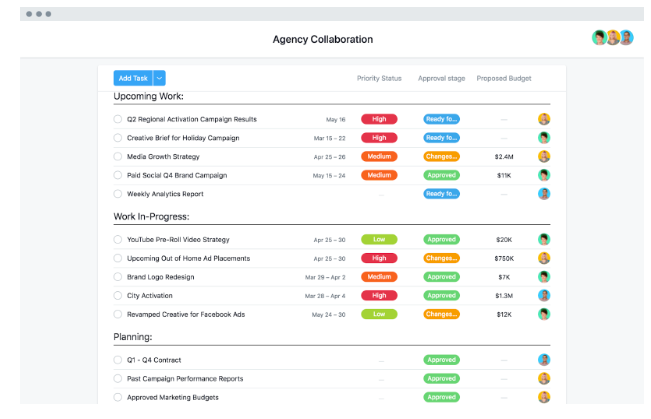Ladders experts forecast 25% of all professional jobs to be done remotely by 2022. Moreover, their insights show that remote work will continue to flourish in 2023.
Since remote work is projected to become even more mainstream, remote-first companies must create a remote work policy checklist to manage their remote teams more efficiently.
At NoHQ, we help founders develop successful remote strategies, so trust us when we say we've got just the remote work policy checklist you need.
Ready to put your remote-first strategy into action? Here you go.
What Is Hybrid Remote Work?
What is remote work from home? It's pretty simple; you work from home. But does that differ from hybrid remote work?
In a hybrid remote work environment, a subset of employees works from the office while another group works from home. That is, the organization has both remote and in-office employees.
Such an arrangement gives employees the flexibility to work from home or come to the office, splitting their time effectively.
What Is A Remote Work Policy Checklist and Why You Need One
A remote work policy checklist is an employer guide specifying the remote work tools and procedures the remote teams will use. It essentially describes the who, when, how, and where of remote work.
Such a checklist would include a communication plan, tools, procedures, etc.
Managing a remote team can be tricky, especially when you haven’t established the ground rules. However, the remote work checklist keeps everyone on track, even when working out of the office.
4 Must-Have Sections On Your Remote Work Checklist (Pointers + Recommended Tools)
-
Cover the Basics
Before going into complex procedures, such as taxation and reimbursement, it's essential to specify the basics.
Employee Specifics (Working Hours, Time Off, and Responsibilities)
- What are your working hours?
- What are the worker's roles and responsibilities?
- How much time off (paid leaves, vacation time) do the workers get?
When setting working hours or roles and responsibilities, make sure you get the employees’ input too. Use time management tools, such as Toggl and Trello, to state and track working hours. You can use an esignature platform like SignHouse to sign your agreement.
Source: Trello
Employee Benefits — Compliance With Local Legislation Is a Must
Whether you plan to go fully remote or want to initiate a hybrid work plan, you must determine whether remote employees will get employee benefits.
- Will the organization’s current employee benefits extend to remote workers?
- Does the state mandate individual health coverage for remote employees?
- Are the organization’s employee benefits compliant with the state’s local laws?
Some states, such as California, require employees to offer a safe and healthful work environment to their employees, even the remote ones. Likewise, the state’s law requires employers to reimburse remote employees for reasonable business expenses.
When creating a remote work policy, you should consider your state’s laws and ensure compliance to avoid any legal problems later.
Communication and Collaboration (Meetings, Teamwork, and More)
- How will meetings be arranged?
- How will workers communicate?
Fortunately, there are many communication and collaboration tools available for teams now. Asana, Basecamp, and Trello are a few examples.

Source: Asana
As for communication, you can use tools like Google Hangouts, Zoom, and Slack. Skype is great for smaller teams.
Remote Readiness: Are Your Employees Equipped for Remote Work?
- Are the employees working in an appropriate remote environment?
- Which equipment will the employer provide?
- To what extent will the employer monitor or inspect the workers’ physical workspaces?
- How will employers ensure workplace security, especially in situations where employees handle customer information, medical records, and other confidential information?
- How will you onboard employees to remote work?
For remote work to be a success, your employees need to work in an appropriate work environment. You can create a survey using Google Forms to ensure that your employees have the resources and space to work efficiently.
Likewise, you can create Google Docs handbooks or Loom videos to onboard employees for remote work.
Training Opportunities (Upskilling and Reskilling)
Just because employees are working from home does not mean they should not have access to training opportunities. According to Fortune, the skills shortage is the biggest threat to corporations in 2022, making reskilling and upskilling essential.
Remote-first companies or hybrid workplaces must develop a virtual plan for training and upskilling employees.
- Identify the skills gap in the organization.
- Create eligibility criteria to enroll in the training program.
- Determine how you will provide training opportunities to your employees.
You can use Zoom or Skype for mentorship programs where a senior employee trains newer recruits. For advanced courses and training, opt for services like Udemy and Coursera.

Source: Coursera
Specify the Compensation and Wages Keeping Market Averages In Consideration
Employers also need to consider how much to pay remote employees when scheduling remote work.
- Minimum wage rate and overtime policies
- Final paycheck rules and date of salary payment
- Compensation per the market average or benchmark salaries
- Timekeeping policies to avoid break and off-the-clock violations for non-exempt employees
- Flexible working hours (may apply to certain employees, such as those involved in childcare)
You can use several compensation management tools like Payfactors and Workday. Xactly is a great tool for quota-based work.
Expense Reimbursement: Which Work-Related Costs Will You Cover?
Employers need to consider the work-related equipment the workforce will need to work efficiently. Some examples include:
- Devices, such as laptops and printers
- Software (subscriptions) and apps
- Office supplies, such as printer cartridges, paper, and pens
- Ergonomic items, such as keyboards, headphones, desks, and chairs
The policy should specify if the employer covers the cost of these items. It’s best to consult local laws to determine if there’s a requirement for expense reimbursement.
For instance, the Illinois Wage Payment and Collection Act, Section 9.5: Reimbursement of employee expenses requires employees to reimburse remote employees for phone and Internet bills.
Ensure Taxation Practices Compliant With State Laws
Employers must consider local laws to determine if they have a taxable presence in their area. After that, it’s essential to include the following in the remote work policy:
- Do the jurisdiction or state laws mandate the employer withhold income taxes?
- What other taxes must the employer withhold? These could include property taxes, business taxes, or social security.
- Are COVID-19 tax rules still applicable on top of regular tax laws in the state? If yes, for how long?
Next Step: Create a Remote Work Policy Checklist As Your Remote-First Blueprint
While this is a general remote work policy checklist, you can tweak it as per your workplace’s needs. The key is to create a policy that ensures maximum productivity, employee engagement, and work efficiency.
Check out NoHQ’s hiring guide or go through the blog to learn the best remote-first practices to build a remarkable all-remote team. Moreover, the blog is a great resource for veteran remote workers who want to take their remote-working experience up a notch.

